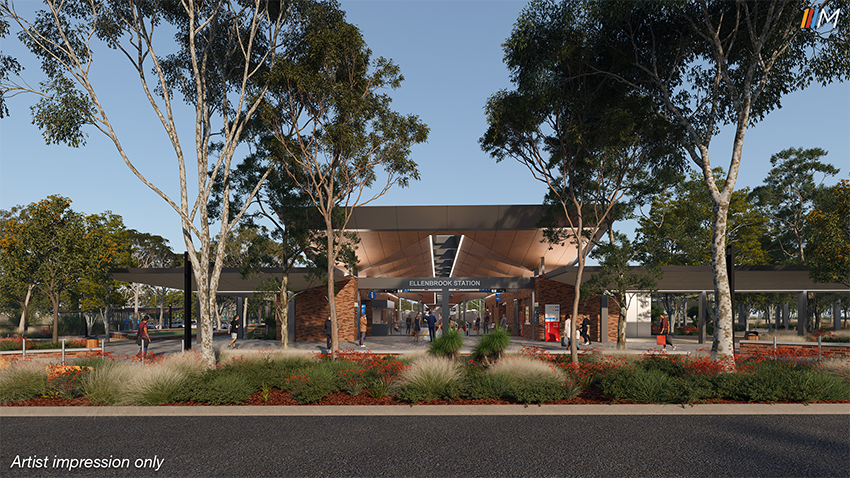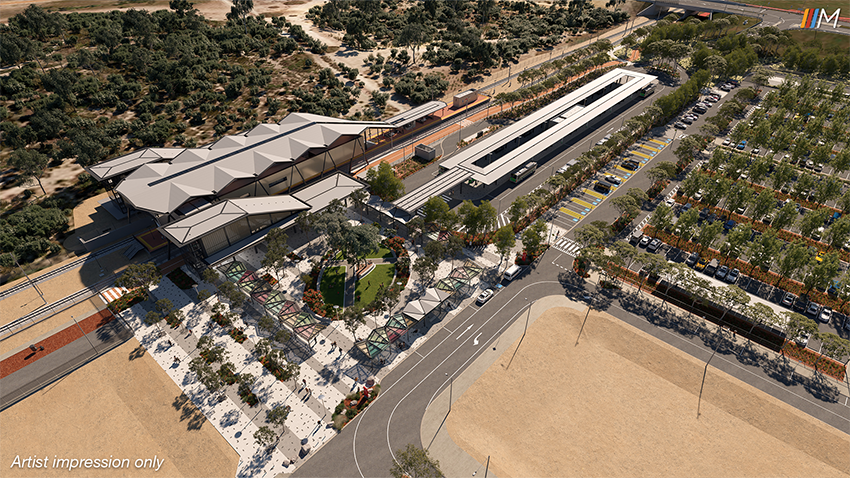This case study relates to Action 35 in the Kep Katitjin – Gabi Kaadadjan Waterwise action plan 3 delivered by METRONET and the Department of Planning, Lands and Heritage.
As one of the single largest investments in public transport that Boorloo (Perth) and Bindjareb (Peel) has seen, METRONET is positively changing how people live and travel. With approximately 72 km of new passenger rail and 23 new stations, METRONET is a catalyst to turn more than 8,000 hectares of land into desirable places to live, work and play.
Under its Sustainability Strategy, METRONET is focused on delivering sustainable outcomes for the long-term benefit of the community, with alignment to the principles of the Waterwise Program. This includes strategic planning and development against Kep-Katitjin 2030 targets, with climate and water embedded in each step of METRONET projects.
To help identify and address the impacts of climate change, the Climate Change Resilience Framework was used to assess each METRONET project. Areas of key vulnerability were evaluated to understand risks from extreme rainfall and flooding, bushfire, drought and storms, and recommend suitable mitigations.
These assessments were shared with precinct planners to support project decision-making and feedback into future design development. Additionally, the Resilience Assessment Framework identifies the key short-term shocks (e.g. extreme rainfall and flooding) and long-term stressors (e.g. inadequate urban planning and drought) considered significant for METRONET projects. The framework ensures climate change impacts and broader resilience risk are integrated into transport infrastructure and station design, with impacts mitigated where possible to achieve a well-connected and integrated Perth.
METRONET also collaborated with the Department of Water and Environmental Regulation and the Public Transport Authority, in consultation with Water Corporation and Main Roads WA, to develop A guide to water sensitive urban design for public transport infrastructure in Western Australia 2021. The guide will be used in each project to embed waterwise outcomes into the planning, design construction and operation of METRONET transport infrastructure, stations and station precincts.
To support consistent outcomes across METRONET projects and precincts, a Landscape Design Guide was developed to balance sustainability with maintainability, safety and access to maximise environmental and social benefits such as place making, amenity, urban ecology and biodiversity.
In addition to the waterwise initiatives above, METRONET program wide sustainability objectives also include the use of drought tolerant and/or native plants to minimise the urban heat island effect, 20 per cent reduction of whole-of-life direct water use and greenhouse gas emissions, and the creation of safe and accessible stations and public spaces.
By prioritising best practice, transparency and accountability in collaboration with key stakeholders and partners the METRONET program promotes the walking together approach championed by Waterwise and showcases sustainable transport solutions to guide Perth’s future development.




